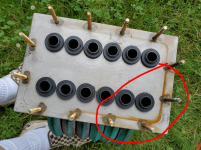Not sure if I saw this mentioned, but you can replace the heat exchanger but if you don't know why it failed, it will happen again. 99% of the time when a heat exchanger fails it because the water was acidic and it created a hole(s) in the heat exchanger. So figure out why it did this and fix that or you'll be right back in the same place in time.
My business is working on pool heaters and I would never suggest replacing a heat exchanger on a unit. But if you have the time and can do it yourself, good luck.
My business is working on pool heaters and I would never suggest replacing a heat exchanger on a unit. But if you have the time and can do it yourself, good luck.



